What Is Tamarind and How Do You Use It?
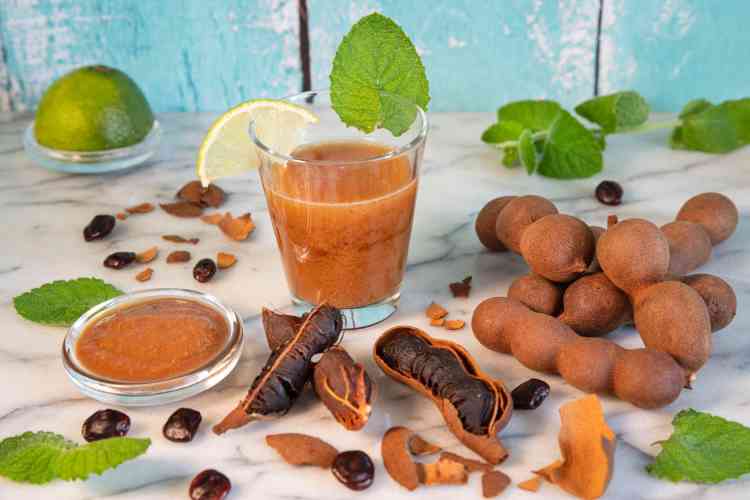
If you want to broaden your culinary knowledge, it may be time to get acquainted with the tamarind. Tamarinds are a versatile fruit featured in all kinds of global cuisines. By utilizing the distinctively sweet and tangy flavor of these fruits, you can bring new life to your favorite savory and aromatic dishes.
As great as tamarinds are, many people know very little about the tasty fruit. To help, we’ve put together an easy guide on what tamarind fruit is and how you can incorporate it into your cooking.
Jump to Section
- What Is Tamarind?
- Is Tamarind a Fruit?
- What Does Tamarind Taste Like?
- How To Eat Tamarind
- Tamarind Benefits
- Where To Buy Tamarind
- What Is a Good Tamarind Paste Substitute?
What Is Tamarind?
Tamarinds are little fruits that come in pods and are grown on a tamarind tree. Originating in Africa, the tamarind tree produces a somewhat sour fruit that is used in various dishes. You can find a prevalent use of tamarinds in cuisines around the world, including Asia, Africa and the Middle East. Tamarind fruits also make an appearance in British cuisine, where they are often used when making Worcestershire sauce.

Where Does Tamarind Grow?
Generally speaking, tamarinds grow in a tropical climate, as the plant is originally from tropical Africa — more specifically, the island of Madagascar. However, tamarinds are now cultivated in several regions, most dominantly in India and Thailand, as well as countries in South America.
Tamarinds usually don’t grow successfully in the United States due to the plant’s need for a tropical climate. If the temperature is too cold, tamarind plants will struggle to survive. However, you could grow tamarinds in a climate-controlled greenhouse environment, as long as they get enough sunlight and the indoor temperature stays warm.
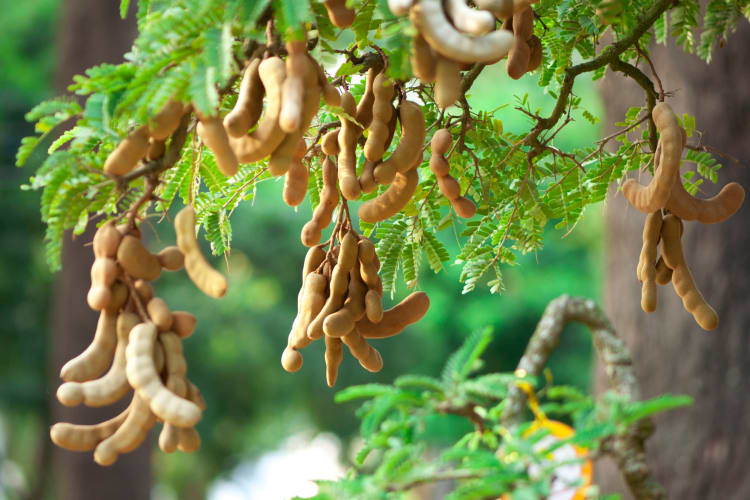
What Is Tamarind Paste?
Tamarind paste is a common way to store tamarinds and use it in recipes. Tamarind paste is extremely simple and is essentially the soft, ripe tamarind fruit with the seeds removed. This paste is dark and sticky and has a sour taste.
A jar of tamarind paste is a preferable way to store the fruit because it keeps for a long time and it’s easy to use in recipes; all you need to do is scoop out some of the paste and add it to whatever sauce or mixture you’re making.
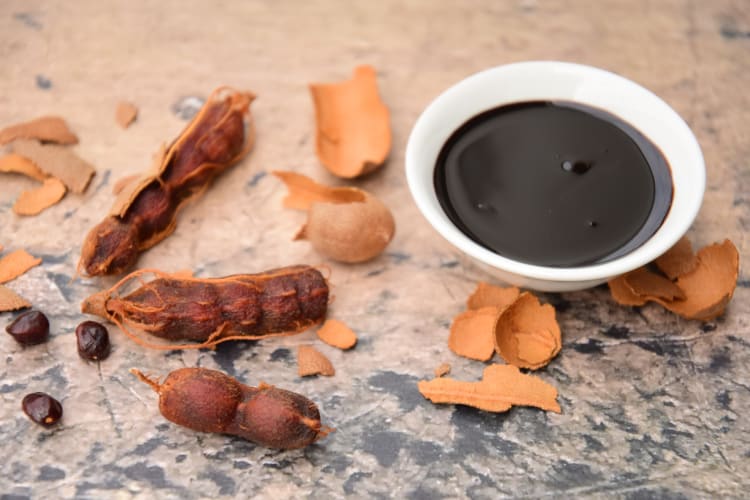
What Is Tamarind Sauce?
Tamarind sauce is not the same as tamarind paste. While tamarind paste is made of pure tamarind, tamarind sauce contains several ingredients. Tamarind sauce consists of watered-down tamarind paste and other flavorful ingredients that balance out the sourness of the paste. Typical ingredients for a tamarind sauce include brown sugar, ginger, chili pepper and soy sauce.
Unlike the thick, sticky texture of tamarind paste, tamarind sauce is thinner, usually like a syrup. Those who make tamarind sauce at home usually mix a concentrated tamarind paste with water to create the tamarind portion of the sauce, but you can also use regular tamarind paste with slightly less water to get a similar result.
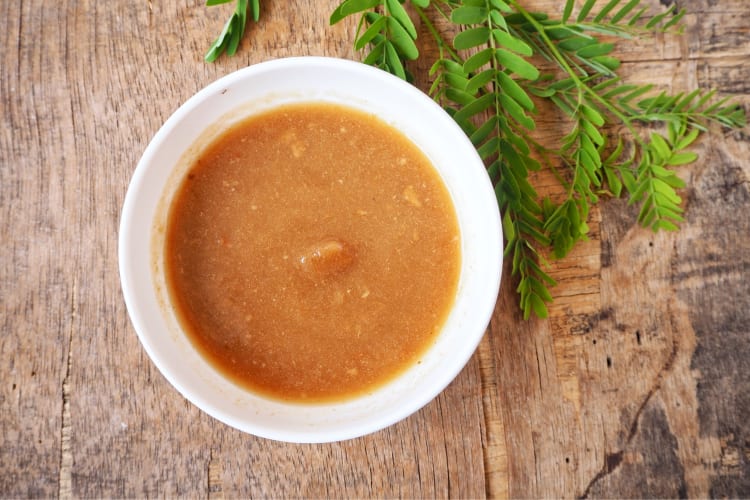
Is Tamarind a Fruit?
Tamarind is most certainly a fruit. Tamarinds contain seeds and grow on a flowering plant, which, by the botanical definition, makes them a fruit. But it’s worth noting that in addition to being a fruit, a tamarind tree is leguminous, meaning that a tamarind fruit is a type of legume. Examples of other legumes include peanuts, soybeans and chickpeas.
What Does Tamarind Taste Like?
So, what do tamarinds taste like? In short, don’t bite into a tamarind expecting a sweet flavor. Although tamarinds get a little sweeter as they ripen, they generally have a pretty tart flavor profile.
Tamarinds aren’t very acidic, so they don’t necessarily have a “fruity” taste that you might associate with citrus fruits. Some might find that tamarinds taste a little like sour cherries, although tamarinds still distinguish themselves by having a heavy flavor note that’s similar to molasses.
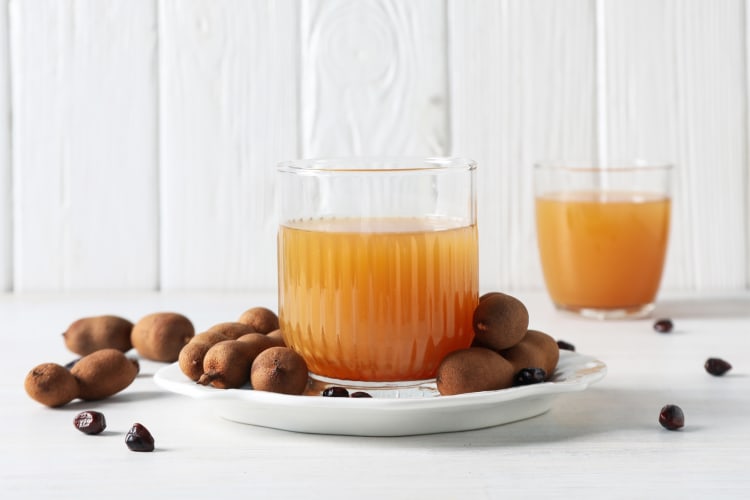
How To Eat Tamarind
So, with all those tamarind fun facts in mind, what is tamarind good for? Tamarind pops up as an ingredient in a lot of dishes. You can use tamarind when you make all kinds of curries, chutneys and other sauces. Tamarind also has a sweeter side and can be used in tamarind candy, which is a mix of tamarinds, sugar and chili powder, sometimes with the addition of other fruits like mango.
If you want to learn more about preparing dishes with tamarind fruit, look for cooking classes near you. Alternatively, if none of the classes in your area specialize in cuisines that use tamarinds, you can also search for online cooking classes. With the right course, you’ll soon be making everything from basic tamarind sauces to yummy chicken massaman curry.
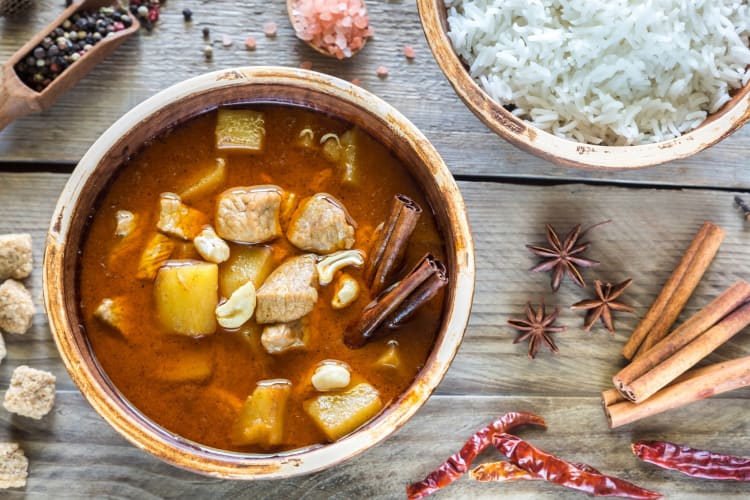
Can You Eat Tamarind Raw?
While tamarind is mostly used in cooked dishes, you can also eat tamarind raw if you want to try out how it tastes. To eat raw tamarinds, you can simply break open a pod and nibble at the pulp — just be careful to avoid the seeds. Or, if you have tamarind paste on hand, you can take a little on a spoon and try it out. Just remember that tamarinds are pretty sour, so you might not enjoy that raw flavor on its own.
How To Make Tamarind Paste
Although you can buy tamarind paste at the store, you can also try making tamarind paste from scratch at home. To do so, start with a dried block of concentrated tamarind pulp (sometimes sold as concentrated tamarind paste). Take a piece from the tamarind block and put it in a bowl with boiling water, allowing it to sit for about half an hour.
Then, blend the mixture a bit, making sure all the fibers are broken down. You can use a spoon or masher, but your hands are actually the easiest way to do this. Strain the paste to get rid of the seeds, and store it in a jar until you’re ready to use it. You can also try making tamarind paste with fresh tamarinds removed from the pod, using the same process.

How To Make Tamarind Juice
Tamarind juice is another tasty treat you can make with tamarinds. To make tamarind juice, all you need is tamarind paste, water and sugar. Stir some tamarind paste into hot water. After the water is cooled, strain out any pulp remaining from the paste.
Then, add some cool water and sugar. You can leave the juice as-is, or add an extra ingredient for more flavor, such as bitters. Be sure to keep the tamarind juice in the fridge and serve it over ice.
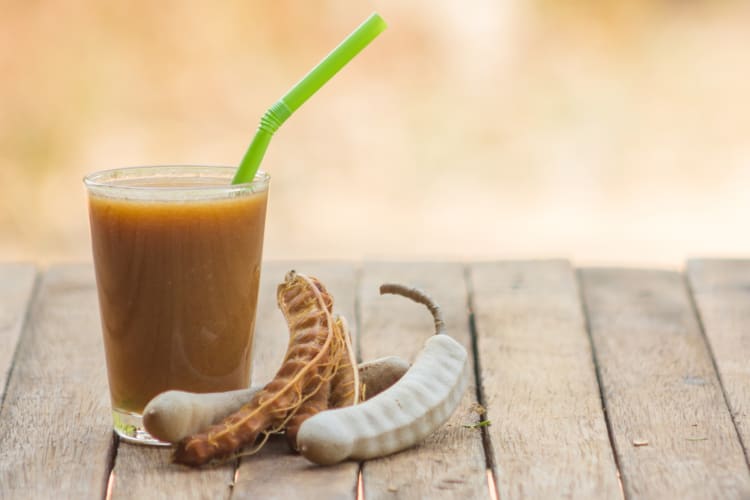
Tamarind Benefits
Tamarinds are an excellent flavor to incorporate into your recipes, but is tamarind good for you? If you enjoy eating tamarinds, you’ll be happy to hear that there are many health benefits of tamarind.
From a nutritional perspective, tamarind contains several beneficial nutrients, such as vitamins A and C, iron, protein, calcium and potassium. Tamarind also has antioxidants and anti-inflammatory properties. A study in the Asian Pacific Journal of Tropical Biomedicine even finds that tamarinds can help promote healthy cholesterol.
Overall, tamarinds, like any food, have both benefits and drawbacks. While the fruit should be fine for anyone to consume in moderation, always consult a medical professional if you’d like to eat tamarind to address a specific health concern.
Is Tamarind Gluten-Free?
For all of those with celiac disease or another form of gluten restriction, don’t worry; tamarind is completely gluten-free. If you’re buying a tamarind product that contains other additive ingredients, you may want to check the label to confirm that it is still gluten-free.
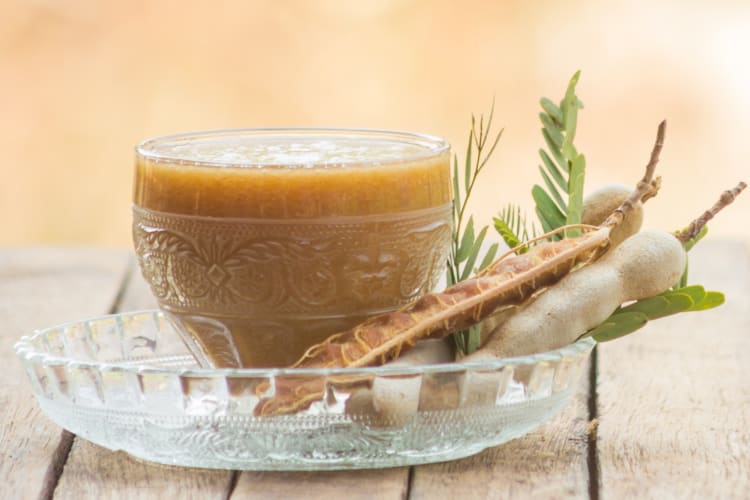
Where To Buy Tamarind
If you’d like to purchase tamarind, you should have no issue finding it. Many mainstream grocery stores now sell tamarind, either in fresh pods or paste form. Look for the pods in the produce section and the paste in the international food aisle.
If you can’t find it at your regular grocery store, look for it at a specialty store, such as an Asian market. And if you’re struggling to find a tamarind product in person, you can always shop online at an independent store or on Amazon and get it delivered.

What Is a Good Tamarind Paste Substitute?
Depending on the recipe, if it calls for tamarind paste and you don’t have any, you could get away with using a substitute. To recreate the flavor of tamarind, try to find something that has a sweet and sour flavor. The simplest tamarind substitute is a combination of lemon or lime juice and brown sugar. White wine vinegar mixed with brown sugar can also work.
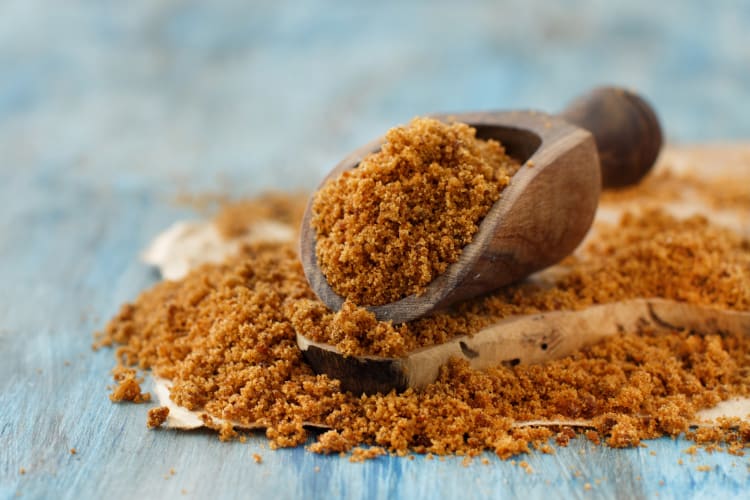
Tamarind is a versatile and unique fruit. Once you understand its flavor profile and how to use it in cooking, all kinds of delicious culinary delights will become available to you. While the thick texture and tart taste might seem intimidating at first, you’ll soon find that tamarind is one of the best ingredients to keep on hand for your cooking adventures.
For even more ways to explore your favorite foods, check out other experiences happening on Cozymeal.



FOOD FOR THOUGHT?
Join the conversation.